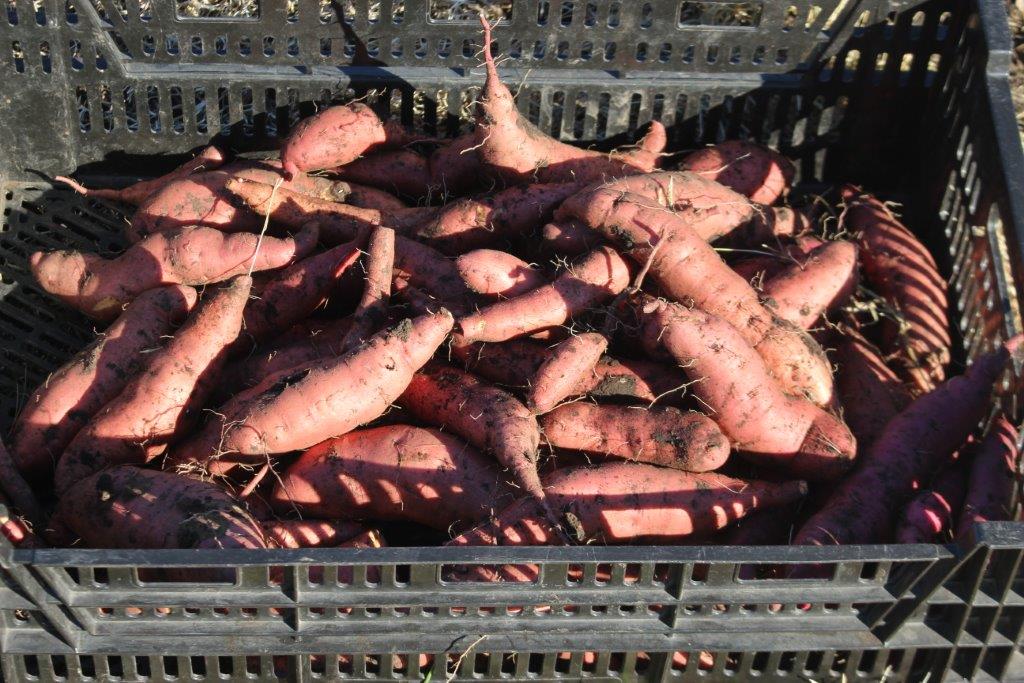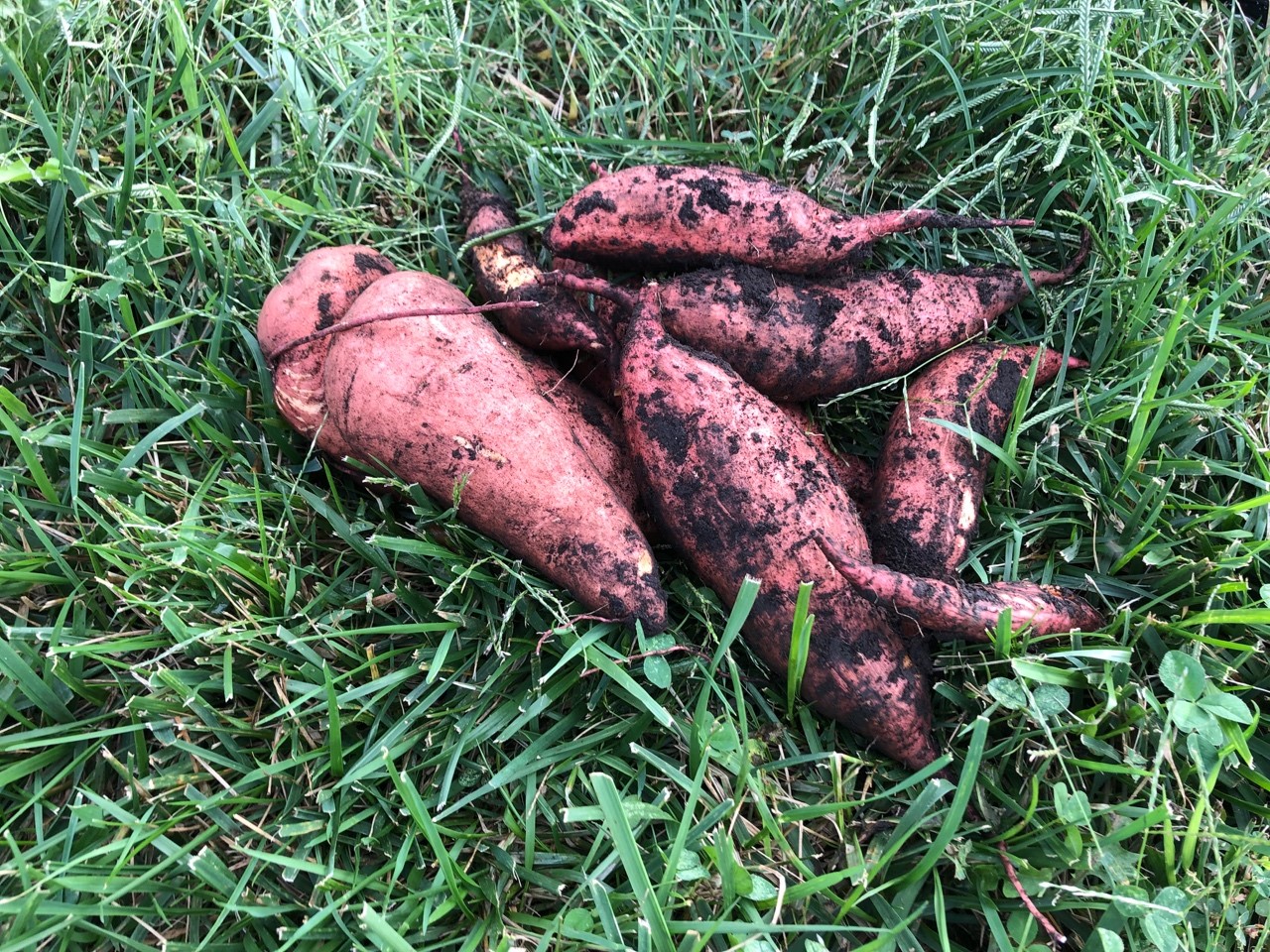Sweet on Sweet Potatoes
 Nearly October, the time is nigh to head out to your garden and dig up this year’s bounty of sweet potatoes. The year has been long, and hot, which coincidentally are the exact conditions required by these tuberous roots to flourish. So, how should you harvest them? And, how do you know when they’re actually ready?
Nearly October, the time is nigh to head out to your garden and dig up this year’s bounty of sweet potatoes. The year has been long, and hot, which coincidentally are the exact conditions required by these tuberous roots to flourish. So, how should you harvest them? And, how do you know when they’re actually ready?
One handy trait to sweet potatoes is that, unless they have a disease or pest issue, they can continue in the ground from the time they are planted to the first freeze of the season. This makes knowing “when” to harvest them exceptionally easy, because all that needs done is to watch the weather report. Knowing that the roots are extremely tender and will not respond well to frost, you will want to get them out of the ground before this event happens.
While the size of a sweet potato does not affect the quality or taste of it, there is also the option to harvest your roots sooner if you are aiming for a smaller to mid-size crop –football-sized harvests may not have the most uses in the kitchen. In this case, you should know timing-wise that mid-September to mid-October is your window for harvest, and the only true “tell” is to either dig a plant up and check the size or to look at the size of mound forming at the base of your vines.
Harvesting, aim to either remove the vines or pull them back, so to have a visual of the digging area. Then, using a pitchfork, dig the plants up beginning from the perimeter of your plant mound and working your way inward. Like Irish potatoes, sweet potatoes will primarily form in clumps at the center of the plant, but they should be dug gingerly so to not stab through your harvest or rip the skin of the potatoes.
 Out of the ground, know that your sweet potatoes will require a “curing” time to set a skin suitable for storage and to develop better favor. Contrary to Irish potatoes, sweet potatoes prefer warm storage and will decay in the cold. So, to cure, have your harvest stored in a ventilating container like a cardboard box in a warm and humid environment for up to two weeks.
Out of the ground, know that your sweet potatoes will require a “curing” time to set a skin suitable for storage and to develop better favor. Contrary to Irish potatoes, sweet potatoes prefer warm storage and will decay in the cold. So, to cure, have your harvest stored in a ventilating container like a cardboard box in a warm and humid environment for up to two weeks.
Ideally, the curing area will be 85-90 degrees Fahrenheit, with high humidity. If, however, you don’t have the means to curate these very specific conditions, a warm shed or garage, or outside in the shade, can also suffice. Given that sweet potatoes have a delicate skin to them as well, it may be best to avoid washing dirt from the crop until after curing. If you do wash the crop straight away, be sure to dry it thoroughly so to prevent mold or rot.
Also, yes, the roots of your ornamental sweet potato vine are technically edible –they just probably won’t taste that good. These varieties have been bred specifically for their ornamental traits and not their flavor. Nevertheless, their curing remains necessary.
